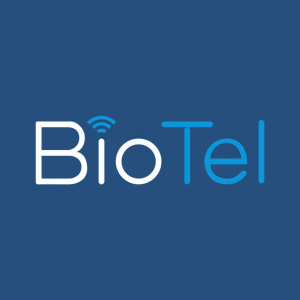HeartBeam Presents Positive Results on its Artificial Intelligence Capabilities for Detecting Arrhythmias
New Data Presented at the European Heart Rhythm Association Conference Marks First Scientific Presentation on HeartBeam AI, the Company’s Deep Learning Technology
Data Shows HeartBeam AI Combined with VCG Greatly Improves Detection of Atrial Flutter over Single-Lead ECGs Found in Leading Smartwatches and Other Wearables
In the study, HeartBeam AI with VCG demonstrated a
Smartwatches have become increasingly popular for detecting and monitoring abnormalities in the timing or pattern of heartbeats but only offer a single-lead ECG, which greatly limits their ability to detect a broad range of cardiac irregularities. Atrial flutter is a common irregularity, or arrhythmia, that typically requires a healthcare professional to administer a 12-lead ECG in a medical setting which is not always practical or even possible at the time of a cardiac event.
HeartBeam’s core vectorelectrocardiography (3D VECG) technology captures the heart’s signals in three projections (X, Y, Z), similar to VCG, and synthesizes a 12-lead ECG. The technology is designed to be used in HeartBeam’s small, portable, patient-friendly devices that allow for remote cardiac monitoring. The Company’s first planned application of the 3D VECG platform technology is the HeartBeam AIMIGo™, a credit card-sized device for patient use at home or anywhere, which is currently under review with FDA.
“The study presented at the EHRA conference shows that HeartBeam AI combined with VCG delivers equivalent performance to a 12-lead ECG and greatly improves detection of atrial flutter over a single-lead ECG, underscoring the limitations of current wearable technologies. This presents an opportunity for a VCG-based algorithm that offers arrhythmia detection capabilities beyond what is available today and to fill gaps in healthcare inequality when obtaining a 12-lead ECG is challenging,” said Dr. Reddy.
The HeartBeam technology gathers far more data than a single-lead ECG. By leveraging AI to analyze these data-rich signals, HeartBeam believes it will be able to improve diagnostic accuracy and the technology has the potential to extract unique information that could go beyond today’s 12-lead ECGs as data of great diagnostic value is gathered from the same patients using the device over time. HeartBeam believes this presents a unique opportunity to create a comprehensive repository of data that could unlock personalized AI-driven insights to improve cardiac care.
“The intent of our AI program is to leverage our novel VECG platform to unlock detection and prediction capabilities currently limited to healthcare facilities and make them readily accessible and available to the patient, and this new data is a clear example of what we can accomplish,” said Branislav Vajdic, PhD, CEO and Founder of HeartBeam. “As we continue to expand our artificial intelligence capabilities, we look forward to demonstrating how the combination of our data rich 3D VECG platform with HeartBeam AI has the potential to transform how cardiac health is managed in the future.”
About HeartBeam, Inc.
HeartBeam, Inc. (NASDAQ: BEAT) is a medical technology company that is dedicated to transforming cardiac care through the power of personalized insights. The company’s proprietary vectorelectrocardiography (VECG) technology collects 3D signals of the heart’s electrical activity and converts them into a 12-lead ECG. This platform technology is designed to be used on portable, patient-friendly devices such as a credit-card sized monitor, watch or patch. Physicians will be able to identify cardiac health trends and acute conditions and direct patients to the appropriate care – all outside of a medical facility, thus redefining how cardiac health is managed in the future. For additional information, visit HeartBeam.com.
Forward-Looking Statements
All statements in this release that are not based on historical fact are "forward-looking statements." While management has based any forward-looking statements included in this release on its current expectations, the information on which such expectations were based may change. Forward-looking statements involve inherent risks and uncertainties which could cause actual results to differ materially from those in the forward-looking statements, as a result of various factors including those risks and uncertainties described in the Risk Factors and in Management’s Discussion and Analysis of Financial Condition and Results of Operations sections of our Forms 10-K, 10-Q and other reports filed with the SEC and available at www.sec.gov. We urge you to consider those risks and uncertainties in evaluating our forward-looking statements. We caution readers not to place undue reliance upon any such forward-looking statements, which speak only as of the date made. Except as otherwise required by the federal securities laws, we disclaim any obligation or undertaking to publicly release any updates or revisions to any forward-looking statement contained herein (or elsewhere) to reflect any change in our expectations with regard thereto or any change in events, conditions or circumstances on which any such statement is based.
View source version on businesswire.com: https://www.businesswire.com/news/home/20240409880945/en/
Investor Relations Contact:
Chris Tyson
Executive Vice President
MZ North America
Direct: 949-491-8235
BEAT@mzgroup.us
www.mzgroup.us
Media Contact:
media@heartbeam.com
Source: HeartBeam, Inc.








